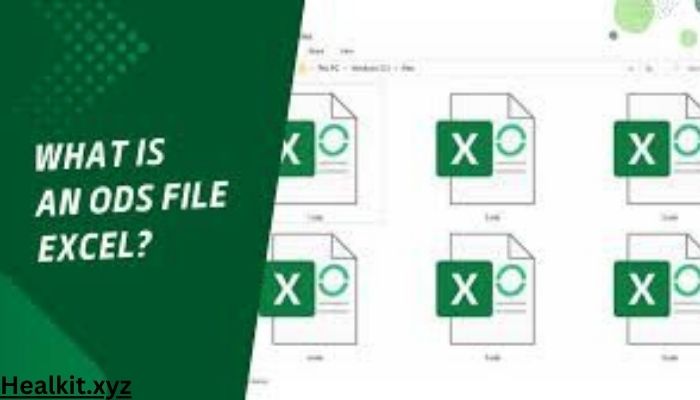ODS, an acronym for Open Document Spreadsheet, is a file format used to store spreadsheet data in the Open Document standard. It is an acknowledged fact that the standard has received recognition due to its compatibility with different office software suites. ODS files are, however, not proprietary, which makes them easily accessible and can be opened by other spreadsheet programs without encountering many compatibility issues. What’s more, ODS files have advanced features like formulas, charts, and sorting capacities, which definitely make them very useful for sophisticated data analysis and professional presentations.
Moreover, ODS files are designed to be small-sized and highly compressed to facilitate easy emailing or online sharing. This optimization aims to reduce both the size of the file and make it work on different platforms. Besides, ODS can be created in several ways, including building spreadsheets from scratch or importing data from various sources. These may range from integrating with other spreadsheet software, databases, text files or even online repositories, offering users diverse possibilities for aggregating and analyzing information.
ODS File Format
ODF, short for OpenDocument Format, is a flexible file format for rendering documents. It can store files in either a single XML file or several subdocuments combined within a ZIP archive. Every one of the files that make up the archive has its role in the final document. For instance, one part of the document keeps style information while others are used to hold actual content. This modularity ensures that elements of the document are well organized and managed.
Typical ODF documents consist of several parts, including content.xml, which holds the main contents of the document and any related automatic styles, as well as styles.xml, which includes various styles applied to the document contents and their associated automatic styles. Meta.xml contains all necessary metadata like authorship and last saved timestamps; at the same time, settings.xml provides configurations such as window dimensions and printer settings peculiar to each application. On top of making it easy to create documents, this structured framework allows for interoperability between different platforms and software applications.
Difference between ODS and CSV
The CSV files and ODS files resemble Excel files, which may cause users to wonder about the differences between them. In this case, appreciating these dissimilarities is significant for effective record-keeping. For example, CSV files are plain text documents with delimited data, as opposed to ODS, which are compressed zip files. Consequently, ODS files store data that is similar to CSVs using minimal space. Lastly, it is essential to note that while ODS supports inserting charts, graph images and other multimedia things with data, CSV does not have any of these features except raw information without formatting or any other thing else added up to the document, making it a straightforward, plain text document containing delimiters.
Uses of ODS Files
Making Graphs
Most of the time, when a person has an overwhelming schedule, he barely goes through all reports, and it becomes hard to evaluate a company’s or institution’s performance. ODS files offer the best way to create visually stimulating graphs and charts that give an overview of success and failure over time. Furthermore, it simplifies the process of evaluation, hence improving planning for the next period.
Calculating Budgets
Consideration of income is what guides this development of budgets for most organizations, both businesses and institutions. Most times, they use ODS files to carefully construct and review these budgets, making sure that resources are appropriately apportioned for the years ahead. Through these means, firms can gauge their financial positions and plan effectively for future investments as well as spending sprees. Also, with ODS files, an organization can improve its budgeting process, thereby enabling it to make better decisions in the long run, hence sustainable growth strategies.
Making Time Tables
It is common for schools, colleges, and business enterprises to make use of ODS file formats when drawing up timetables. The purpose of these schedules is usually to arrange a program that students will follow in their classes, and employees will observe on a working day. After completing the schedule, finalize it and hang it on notice boards where everyone can access it with ease. Moreover, some institutions utilize computer programs in order to make timetables available via the Internet, thereby serving their communities more efficiently than ever before.
How to Open an ODS File?
Open the OpenDocument Spreadsheet (.ODS file) on Windows
Opening ODS files requires you to have either ‘Apache Open Office Suite’ or ‘Microsoft Office’ on your computer since these are the programs that can open it. Many other programs won’t be able to support this file format. After you have downloaded the software, go to the ODS file and click right. Then, from the menu, select “Open with”. A list of applications will appear, from which you can choose the Apache Open Office Suite and then press the OK button.
Open the OpenDocument Spreadsheet (.ODS File) on Mac
If you want to view ODS files on your Mac, you need two things: Apache Open Office Suite or Microsoft Office. Once done with the installation, open the application, go to the file menu, and then click open. Navigate your way to where your ODS file is saved, select it and tap on the open button. You may come across a dialogue box requesting permission for you to access the file, and in such a case, choose to allow only instead; bingo, your file is now viewable. It is important to note that they are most commonly used for financial records, project management and so on… As a result, if one doesn’t know how to open them and use them effectively on a Mac, this can be a massive advantage for them as they will be able to perform various other activities quickly. Read More
